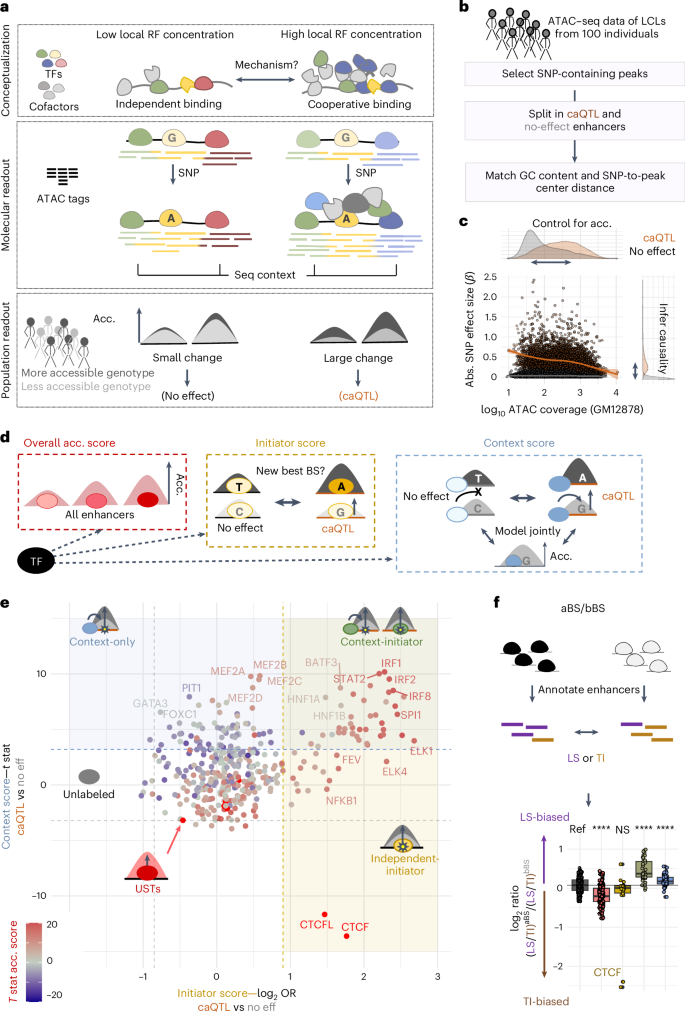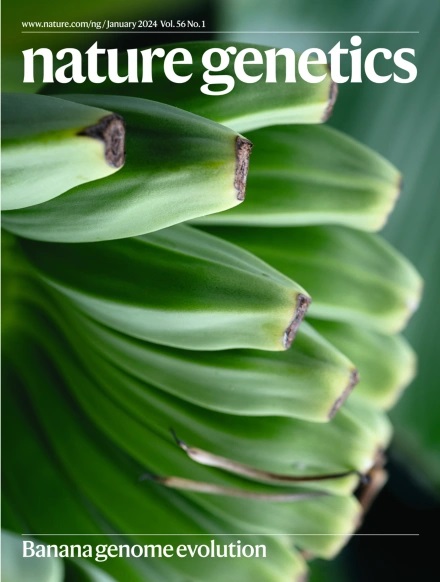内涵转录因子建立合作环境并介导增强子交流
IF 31.7
1区 生物学
Q1 GENETICS & HEREDITY
引用次数: 0
摘要
许多增强子通过组装调控因子簇(也称为凝聚体)来控制基因表达。这一过程对于促进增强子交流和建立细胞特性至关重要。然而,人们对DNA序列和转录因子(TF)结合如何指导高调控因子环境的形成仍然知之甚少。在这里,我们开发了一种新方法,利用以增强子为中心的染色质可及性定量性状位点(caQTLs)在全基因组范围内提名调控因子群。通过分析caQTLs背景下的TF结合特征并比较外显子与内生增强子的活性,我们发现了一类调控因子--"纯背景 "TFs,它们能放大细胞类型特异性caQTL结合TFs(即 "背景启动子 "TFs)的活性。与超级增强子类似,富集了纯上下文TF结合位点的增强子也显示出很高的辅激活子结合率和对溴化链抑制分子的敏感性。我们进一步表明,纯上下文 TF 和上下文启动子 TF 的结合位点是增强子协调的基础,这为松散的 TF 句法如何赋予调控特异性提供了机理依据。本文章由计算机程序翻译,如有差异,请以英文原文为准。


Context transcription factors establish cooperative environments and mediate enhancer communication
Many enhancers control gene expression by assembling regulatory factor clusters, also referred to as condensates. This process is vital for facilitating enhancer communication and establishing cellular identity. However, how DNA sequence and transcription factor (TF) binding instruct the formation of high regulatory factor environments remains poorly understood. Here we developed a new approach leveraging enhancer-centric chromatin accessibility quantitative trait loci (caQTLs) to nominate regulatory factor clusters genome-wide. By analyzing TF-binding signatures within the context of caQTLs and comparing episomal versus endogenous enhancer activities, we discovered a class of regulators, ‘context-only’ TFs, that amplify the activity of cell type-specific caQTL-binding TFs, that is, ‘context-initiator’ TFs. Similar to super-enhancers, enhancers enriched for context-only TF-binding sites display high coactivator binding and sensitivity to bromodomain-inhibiting molecules. We further show that binding sites for context-only and context-initiator TFs underlie enhancer coordination, providing a mechanistic rationale for how a loose TF syntax confers regulatory specificity. This study identifies context-only transcription factors (TFs), a TF class that enhances DNA accessibility initiated by cell type-specific TFs and establishes cooperative environments. Enhancers enriched with motifs of both TF classes show high coactivator binding, enhanced coordination and sensitivity to bromodomain inhibitors.
求助全文
通过发布文献求助,成功后即可免费获取论文全文。
去求助
来源期刊

Nature genetics
生物-遗传学
CiteScore
43.00
自引率
2.60%
发文量
241
审稿时长
3 months
期刊介绍:
Nature Genetics publishes the very highest quality research in genetics. It encompasses genetic and functional genomic studies on human and plant traits and on other model organisms. Current emphasis is on the genetic basis for common and complex diseases and on the functional mechanism, architecture and evolution of gene networks, studied by experimental perturbation.
Integrative genetic topics comprise, but are not limited to:
-Genes in the pathology of human disease
-Molecular analysis of simple and complex genetic traits
-Cancer genetics
-Agricultural genomics
-Developmental genetics
-Regulatory variation in gene expression
-Strategies and technologies for extracting function from genomic data
-Pharmacological genomics
-Genome evolution
 求助内容:
求助内容: 应助结果提醒方式:
应助结果提醒方式:


